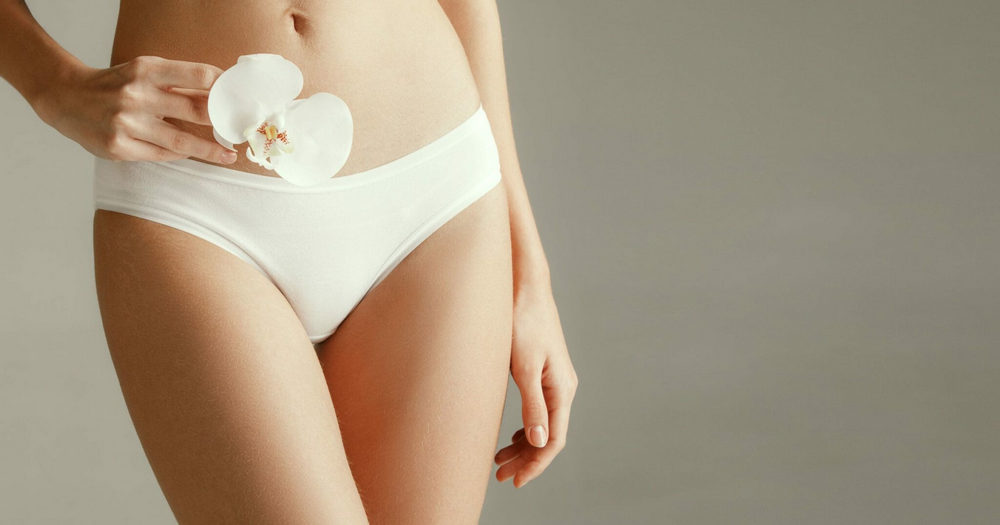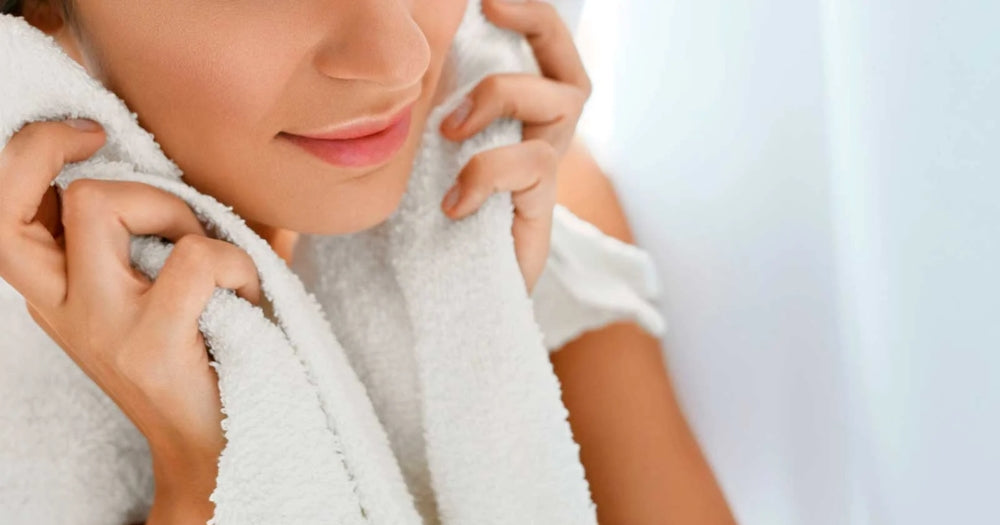Does it itch or tingle? Do you have a burning sensation down there? Then read on because we'll go into detail.
Like other parts of our body, the pubic area also has hair. Moreover, it is one of the characteristic features that appear with the onset of puberty. However, there are two categories of pubic hair, which depend on individual and genetic factors. For some, the hair in this region grows quickly, while for others, it grows at a snail's pace. Regardless of which category you fall into, there is one factor that is common to both categories - getting rid of the hair.
To do this, many people look for different options. From shaving sticks to depilatory creams, they serve the purpose of removing hair from the intimate area.

A quick review of some lessons from biology classes at school will help us understand that the intimate area consists of the breasts, the penis or vagina and the buttocks. In this case, we refer to the hair in the armpit, the intimate area and around the bikini line as pubic hair.
While some people are fine with the razor blade, others who have a blade phobia opt for a depilatory cream. But one question you may want to ask yourself is how safe the depilatory creams are, especially for ingrown hairs in the intimate area. These and many other questions will be answered if you read on.
In this article, we'll explain what depilatory creams are and what they're used for, what to consider when using a depilatory cream on your pubic area, what types of hair removal options there are, and then we'll focus on the 3 side effects of depilatory creams on the intimate area.
It promises to be an exciting read, so keep reading as we embark on this journey.
Table of contents:- Part 1: What are depilatory creams?
- Part 2: What to consider when using a hair removal cream for your pubic area
- Part 3: 3 side effects of hair removal cream for the intimate area
- Part 4: Better Hair Removal Methods
- Part 5: Concluding remarks
What are depilatory creams?
Depilatory creams, also known as hair removal creams, are thick creams that are applied to a hairy surface to remove hair in the area to which they are applied.

What are they used for?
As the name suggests, depilatory creams are used to get rid of hair as smoothly and painlessly as possible. This works by weakening the hair strands in the areas where they are applied.
How are they used?
To use the depilatory creams, apply a moderate amount to the area you want to remove hair and then spread it over the surface. Leave it on for a few minutes and then wipe it off with a clean cloth. This will leave your skin clean, hairless and smooth.
Are depilatory creams safe?
To a certain extent, depilatory creams are considered safe and are even safer than razor blades, but it depends on how you use them and how well you use them. With depilatory creams, you don't have to worry about getting cut by a razor, but if you use them incorrectly, there are far more than a hundred things to worry about.
While depilatory creams are painless, they can subtly cause more damage to your skin than you can imagine. So if you need more clarity about these creams, opt for other, safer options than those listed below. Remember, it's better to be safe than sorry.
What you should consider when using a hair removal cream for your pubic area
Since the pubic area is very sensitive, you need to be careful about what type of hair removal creams you put on your skin. You should ask about your skin type to know if the hair removal cream you choose is suitable for your skin.

-
Do a patch test
It is always advisable to do a patch test first before trying a cream on your skin. The reason for this is that not all creams are suitable for every skin type. Once you know your skin type, the next thing you should do is do a patch test.
A patch test is used to test whether your skin is allergic to the substances used in the cream. To do this, take a small amount of the hair removal cream and apply it to an inconspicuous area of your skin or under a plaster. Then pay attention to how you feel in that area after applying the cream. Do you feel a tingling or burning sensation? Or do you feel completely normal afterwards? Depending on how you feel, you can decide whether to continue using the product or to stop using it and switch to another product.
-
Know your skin allergies and triggers
Some hair removal products often contain active ingredients such as artificial preservatives and fragrances that can be harmful to the skin. Therefore, it is advisable to know the ingredients used in the manufacture of these creams. Research these ingredients and read about their side effects. This will help you find out which ingredients may trigger your allergies. This will do you a lot of good and your skin will surely thank you.
-
Contact a trained staff
Dermatologists are trained to give you tips and recommendations on the products that are suitable for your skin type, so it is beneficial to speak to a dermatologist before purchasing a hair removal cream.
Having mentioned these precautions that you should take into account before performing hair removal on your intimate area, let us now examine the side effects of depilatory cream for intimate areas.
3 side effects of hair removal cream for the intimate area
What happens if you use the wrong hair removal cream for your intimate area? Or if you are allergic to a certain ingredient in your hair removal cream? I bet you are curious to know more about this. Read on because in this section we will get to the bottom of it.
#1 Chemical combustion
We can almost read your thoughts on this. Maybe you muttered to yourself: “ I guessed right, oh yes! ” You did and we are proud of you for doing that.

A chemical burn is the most common sensation you feel in your intimate area when your body reacts to the hair removal cream you are using. It gets super hot and then you feel like your skin is burning from the inside. This is just a sign that you are experiencing one of the side effects of the hair removal cream you are using. These burns can be due to the hair removal cream being left on your skin for a period of time. Depending on how long the cream is left on your skin, you may experience a first, second or third degree burn.
Typically, you shouldn't leave the hair removal cream on your skin for more than 10 minutes before wiping it off. Anything longer than that can result in a chemical burn.
#2 Skin irritation
Thioglycolic acid is a key ingredient in the formula of depilatory creams. Additionally, many depilatory creams contain calcium and potassium hydroxide as active ingredients. However, a combination of these chemicals can cause skin irritation when applied to the skin and darken the area over time. Therefore, it is important to know your skin type and which ingredients can cause this irritation so you can avoid it.

#3 Skin damage
This is perhaps the worst side effect you can have. It can happen when the acidic chemicals in the depilatory creams react with your skin and change the pH level, causing skin damage.
Should these side effects stop you from removing hair from your intimate area? No, of course not! There are several alternatives that can serve the same purpose as depilatory creams.
Better methods for hair removal
-
laser hair removal device
Laser hair removal is one of the safest ways to get rid of hair in your intimate area. This technique uses intense pulsed light (IPL) to pass through a channel at the root of your hair follicle to remove the hair. The procedure is almost painless and soothing, leaving your skin looking smooth and clean. If you haven't tried it yet, you can try it with the Try Ulike Air 3 IPL hair removal device . This device uses patented ice-cooling sapphire technology and the thumbless auto-glide mode works perfectly to achieve your desired result in just 3 weeks. Although the laser hair removal device is safe, it is also not without side effects . That's why it's best if you stick to the right product.

-
waxing
Waxing is another alternative to depilatory creams. It leaves your skin hairless and smooth. However, a negative effect of waxing can be redness, which can easily be treated with ice. If you still feel uncomfortable using the waxing strip, you can also opt for other hair removal options.
-
Pluck
Plucking is one of the most precise methods of removing hair from your intimate area. It involves isolating the hairs you want to get rid of and then plucking them out. First, you need to wet the area you want to clean with lukewarm water to soften it. Then, pluck the hairs out with your tweezers. After that, apply an anti-inflammatory cream to reduce redness and pain.
Tweezers are great for removing small amounts of hair, especially around the eyebrows, but you can also use them for your intimate area. The only downside to this method is that it is time-consuming and can be painful. However, if you are patient and careful enough, it can produce the desired result.
-
Shave
This is the most traditional way of hair removal. There are many commercially available razor blades that are good at removing hair from your intimate area. However, using a razor stick or blade can have unpleasant consequences, such as small cuts or even itching. To avoid this, get a clean razor and gel. Also, make sure you give yourself an aftershave treatment.
Concluding note
Much has been said about the side effects of depilatory creams. While some effects are short-lived, others can have long-term effects and make you dependent on skin treatments and therapies. That's why it's best to know which hair removal method is right for you and stick to it.




























